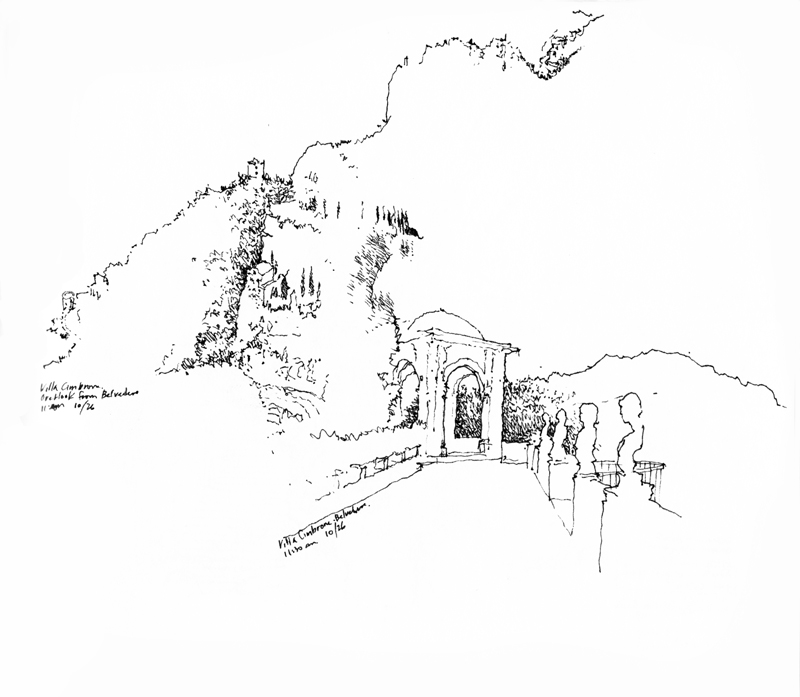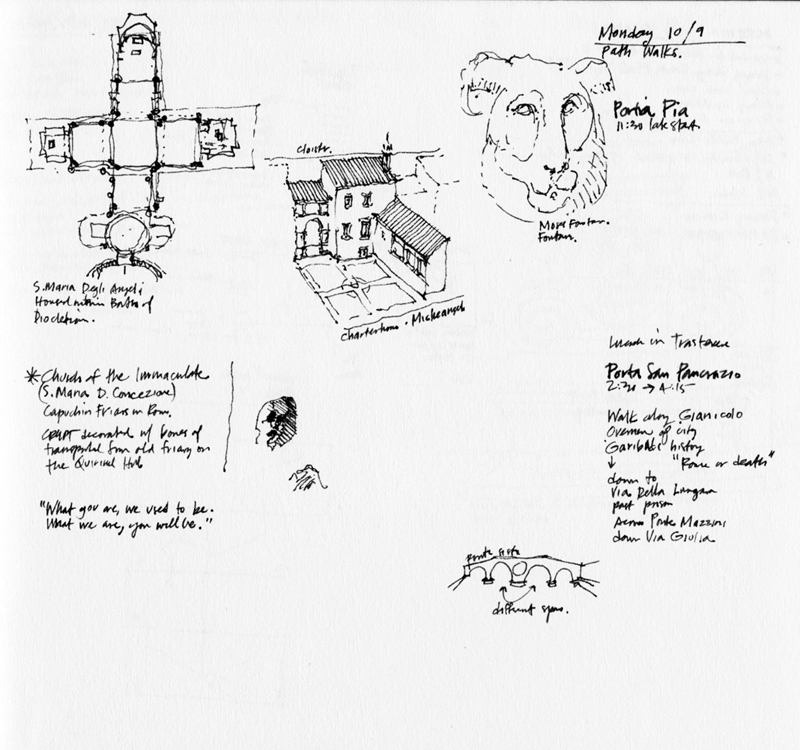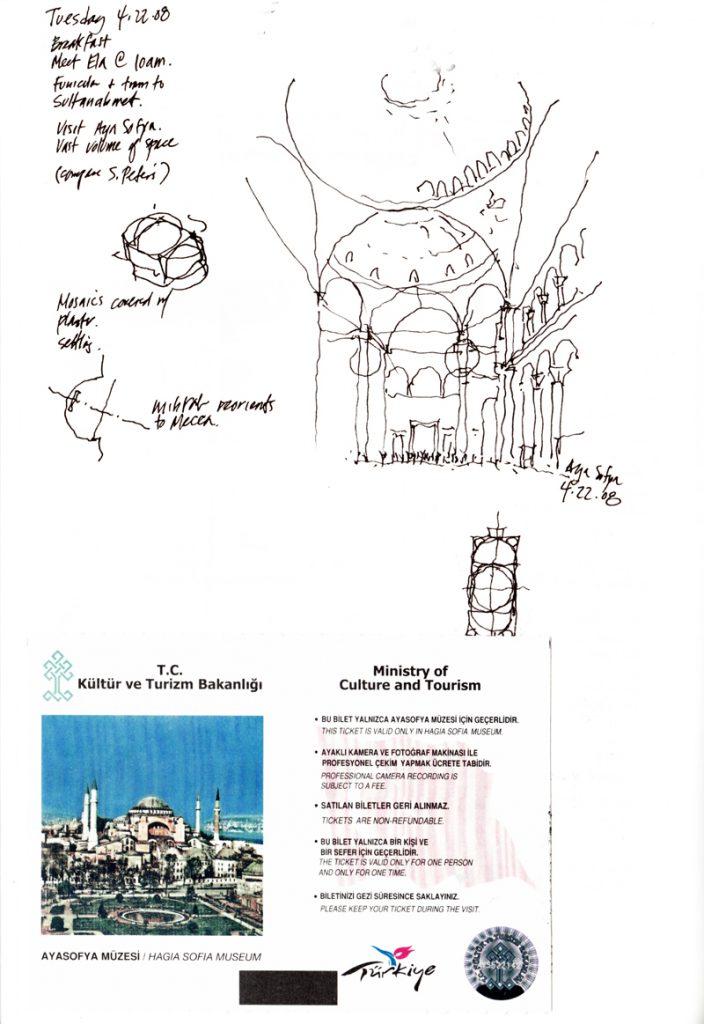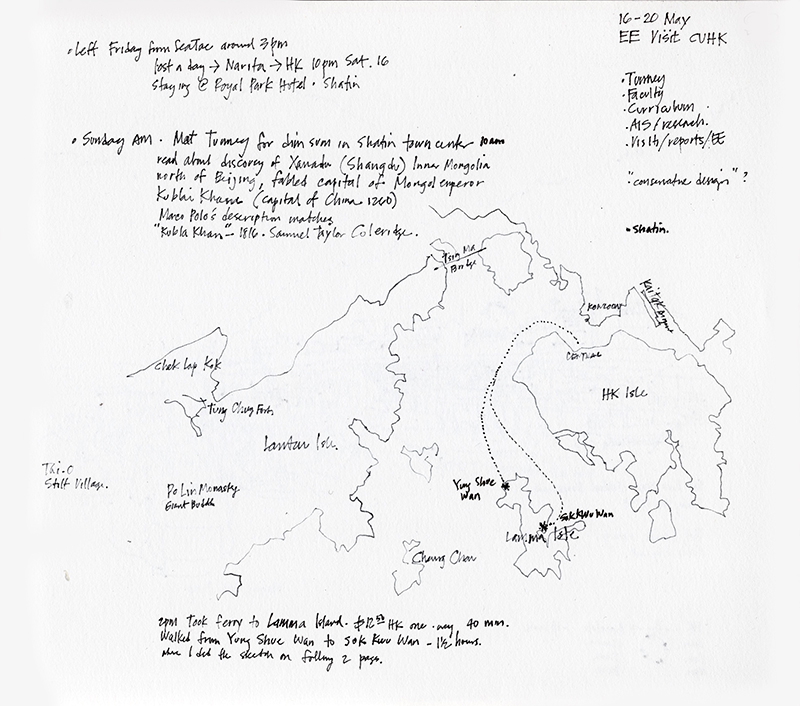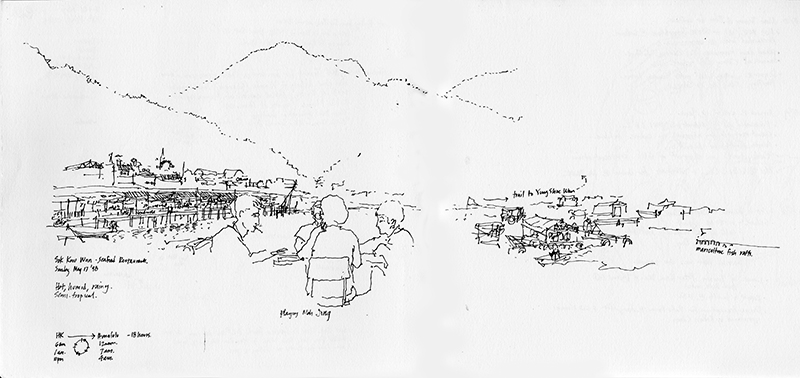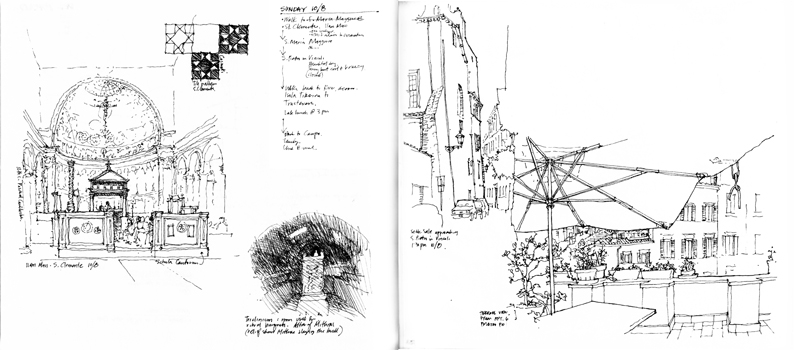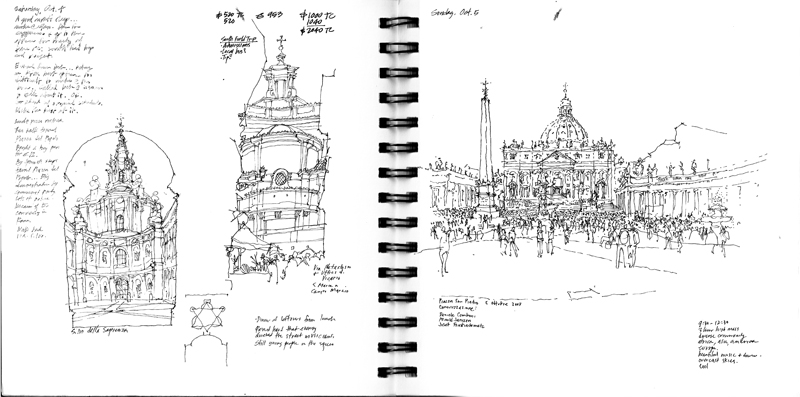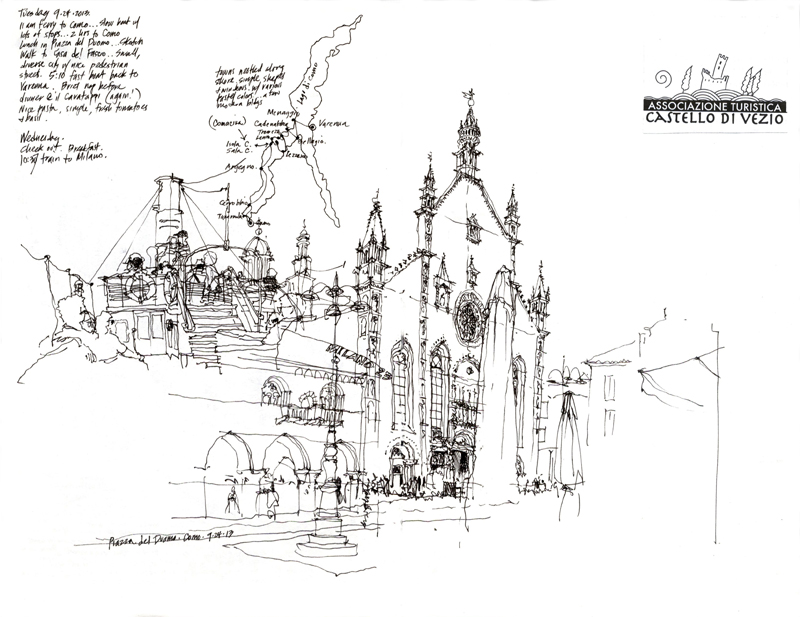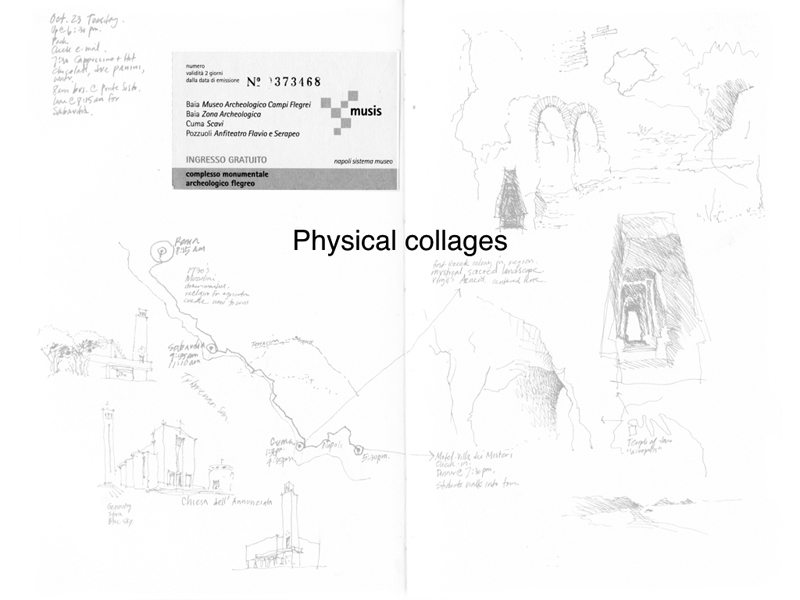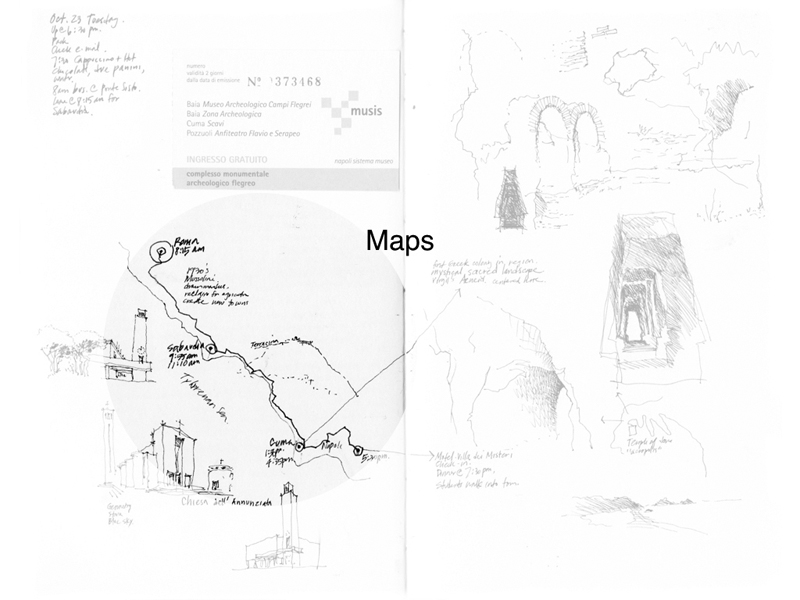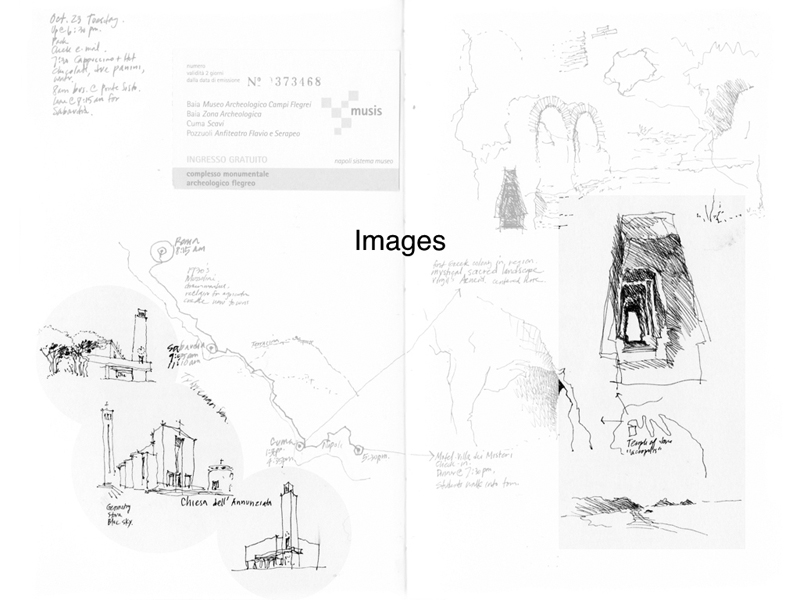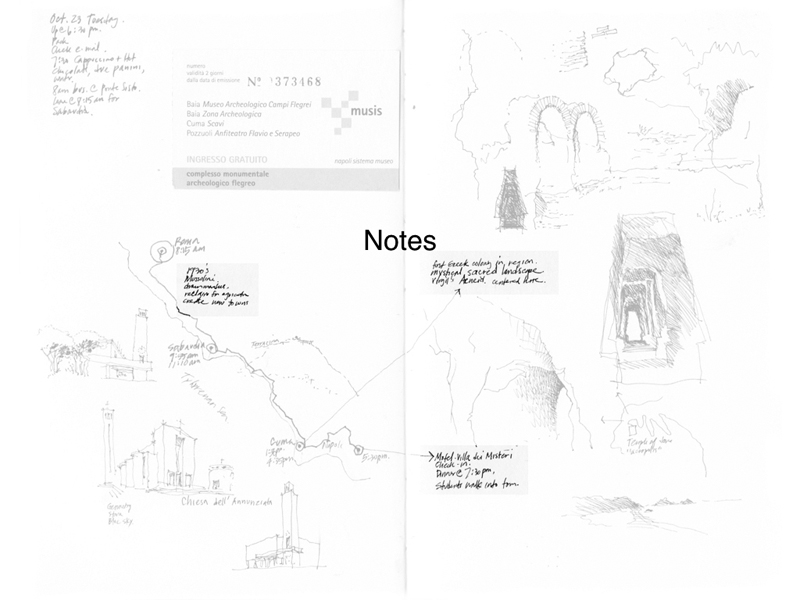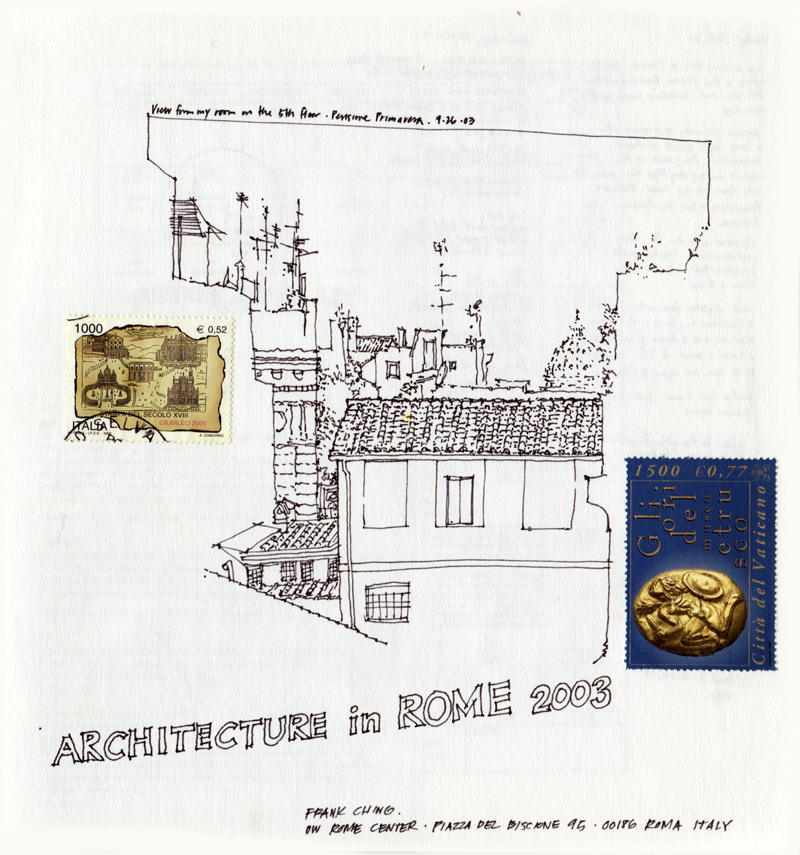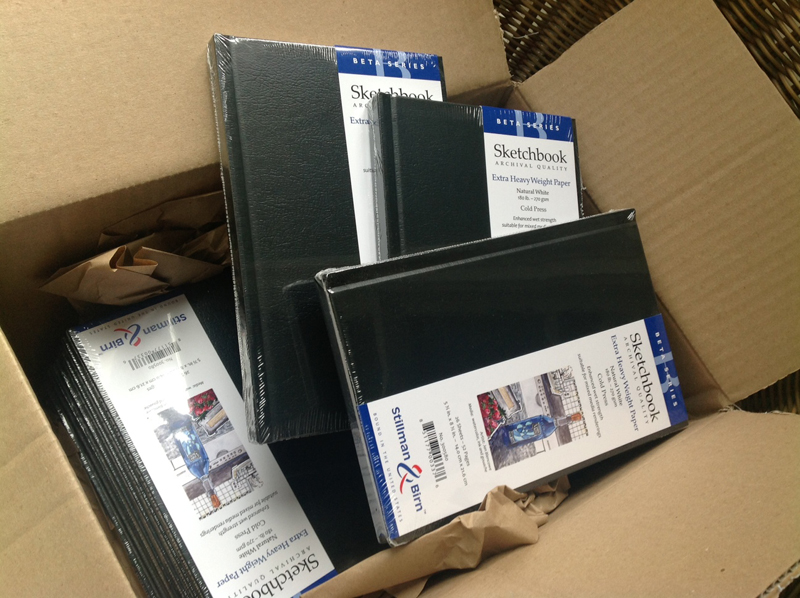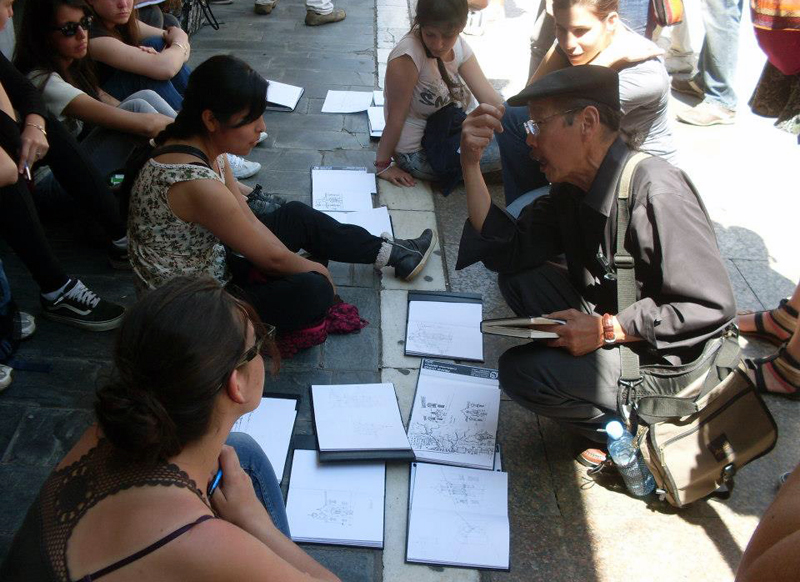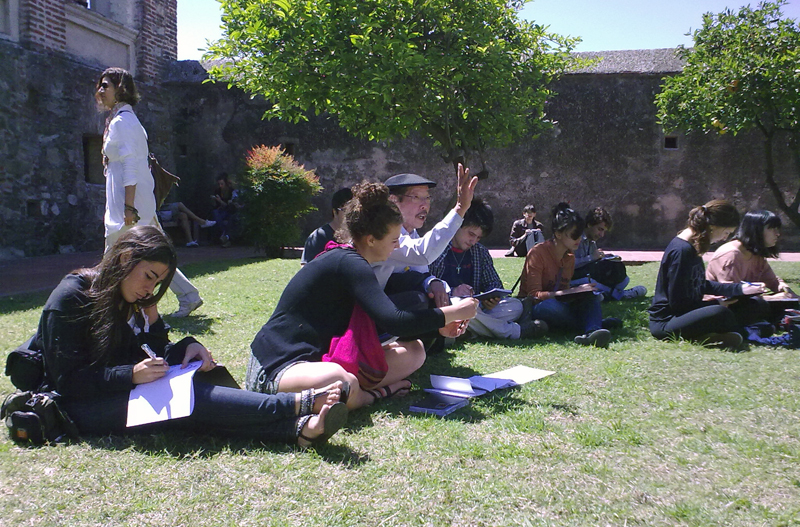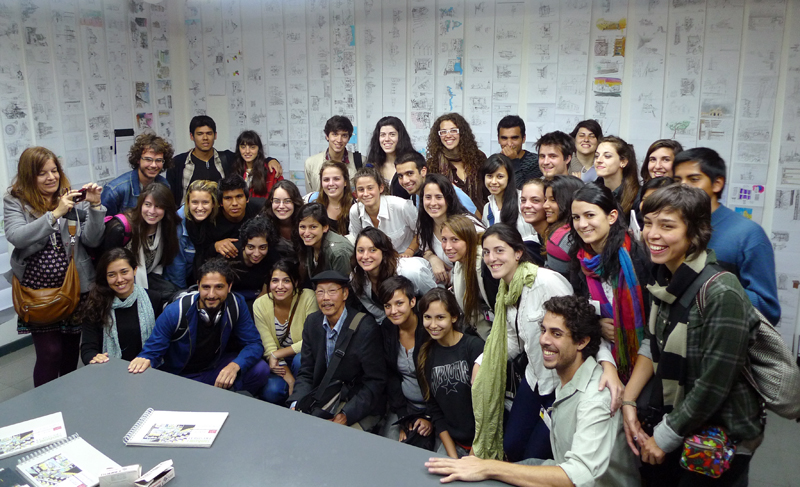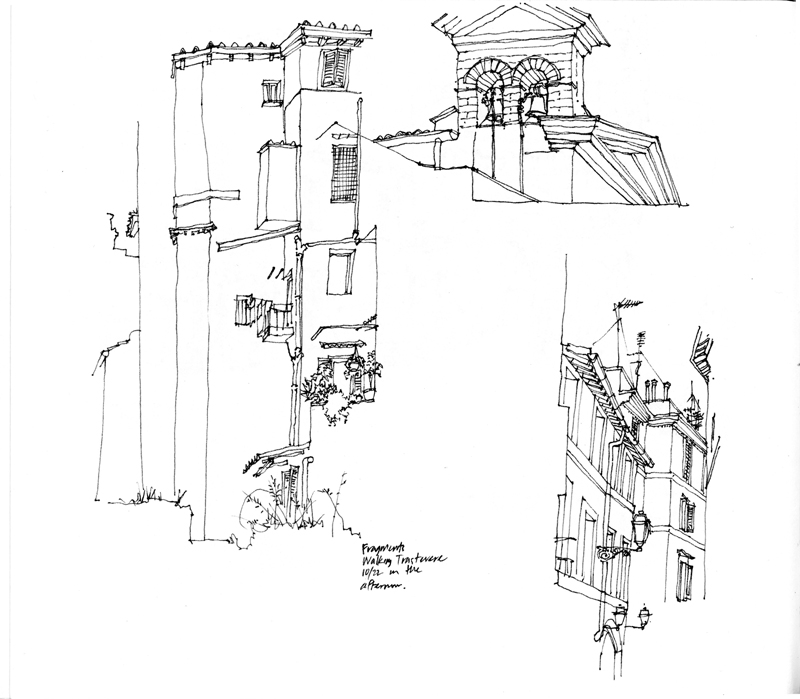 Like sketching, composing each page of a journal or sketchbook is an extemporaneous act. We may have a plan for how to organize the drawings and notes on a page before we begin, but we should also be open to altering the plan as each element is executed.
Like sketching, composing each page of a journal or sketchbook is an extemporaneous act. We may have a plan for how to organize the drawings and notes on a page before we begin, but we should also be open to altering the plan as each element is executed.
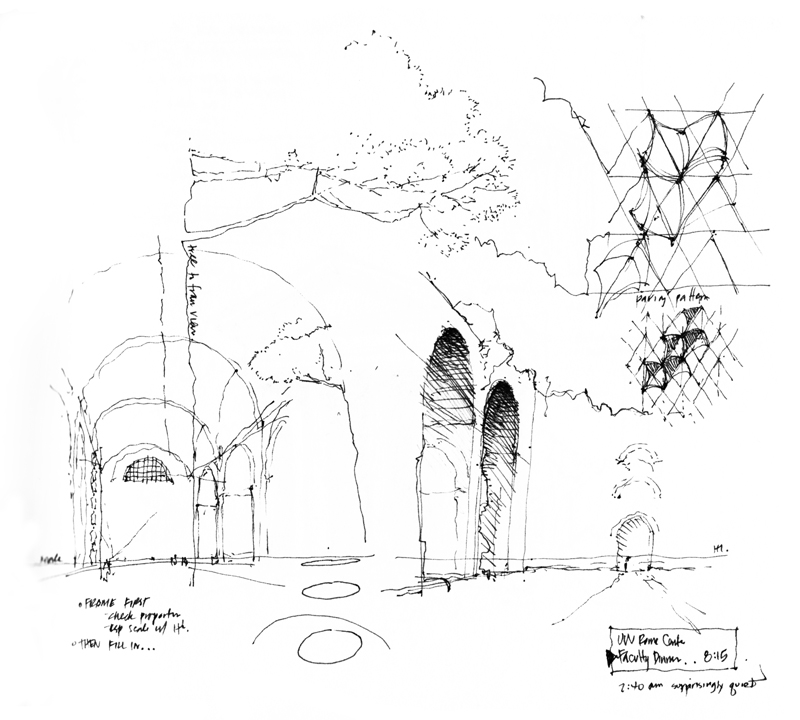
For example, we may find that having executed a drawing, its size, shape and proportions may differ, as so often happens, from what we originally intended. By carefully considering the visual shape and weight of the drawing, we can re-balance the page or give it a more dynamic quality with the placement of the next graphic element, whether that element is graphic or verbal in nature. With the addition of further graphic elements, we continue to encounter this opportunity to re-compose the page.
